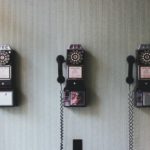The Fine Print: How to Start an Argument
Small blog, no vlog, busy week…
This weeks reflection asks us to consider student privacy and safety in digital environments.
With the move to “educational continuance” in the time of Covid-19, educators are integrating a variety of new technologies to provide some semblance of normalcy for their students.
Considering this blog reflection prompt, and our current situation, I find myself asking a bigger (and likely provoking) question: Is the consideration of student online safety and privacy part of our job?
On the surface, educators may consider the safety and privacy aspects of a new Ed-tech app or program, but most (I would argue) are either rushing to implement something without full consideration (i.e. the lower rungs of the SAMR model), or waiting for the “higher ups” to make the call.
Take my division for example – we use the Microsoft O365 world. Was Microsoft chosen because of the data mining and analytics of the Google corporation? Was this decision about budget? Familiarity? Personal preference of the decision maker?
What makes a school or division (or whatever segment of this institution) decide which ecosystem to live in? Why can some educators use Zoom, while others can’t?
Again, my division has said “yes” to Flip Grid, and Microsoft O365 products, and “no” to others. These divisional choices determine how I make most of my “student privacy and safety” decisions – by assuming that if I have access to it, those things must have been considered by people in positions of power. It makes my job easier to leave that up to others (and no, I don’t think this is an abdication of responsibility on my part).
I foster safety and privacy in my own classroom for my students in many ways and at many times. I do discuss digital literacy and digital safety – that I believe falls under my jurisdiction. I use the tools that I have been given access to, those that my division has organized professional development around (and that is still a lot of options), and those that I have had the time to vet properly (which isn’t many).
I make superficial decisions – like whether to make student videos or artifacts public or private, but even here I am talking about lower-case “p.” Making things Public to people outside our school, or sometimes even outside our class is an easy choice – NO! I don’t have the time, energy or inclination to wade through the fine print of the contracts, discuss with parents, hold meeting, ask for approval, or get consent. It’s an easy decision to make for me
When doing digital work I provide students with options on sharing, audio-only submissions, choice in augmenting assignments to fit interests or perspectives. And while this may limit my options for assignments, and limit the growth of certain aspects of my students’ learning, at least I can sleep at night without worrying if I may have missed something.
I certainly feel more comfortable looking at new Ed-tech tools after my first year in this program (I have learned a lot about open education and privacy). But still, beyond the walls of my class or school, I’d rather say “nope,” then worry about mitigating risk.






hdyck
April 14, 2020 — 4:05 pm
Man – has our science department ever had to deal with this this week!! Seems like our school district does not want to allow ANY tech other than google. Why they want to avoid the most valuable lesson of teaching high school students how to be responsible digital citizens I DON’T KNOW! Hammer home the lesson of not revealing personal and private information in an online setting and then Voila! Dozens of tech options become available.